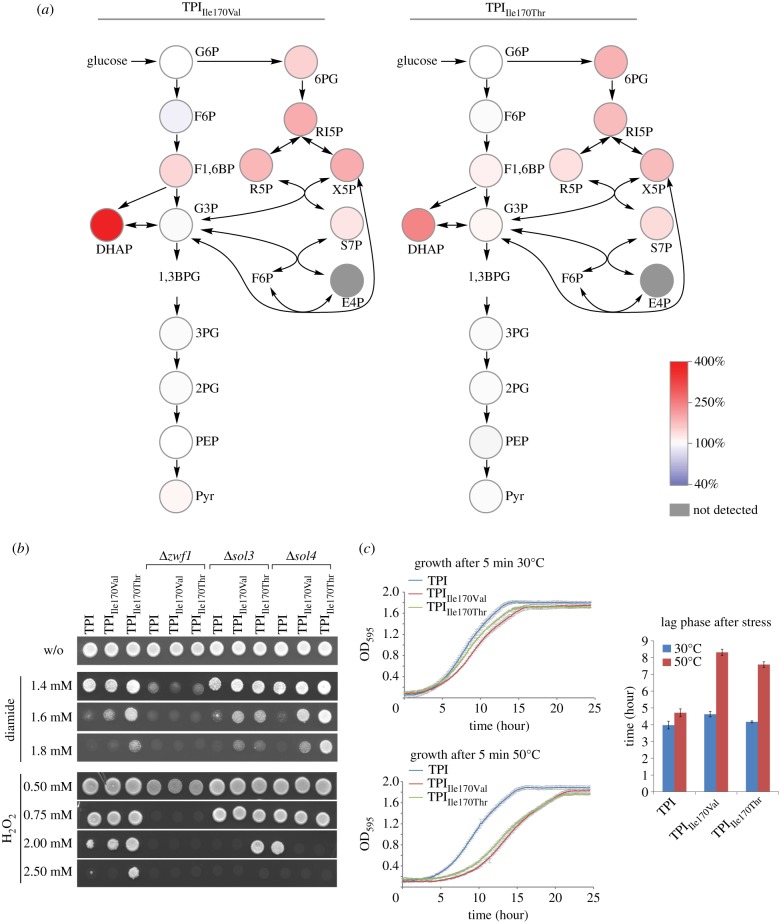Figure 6.
Low TPI activity increases PPP metabolite load and causes oxidant resistance and heat sensitivity. (a) Concentrations of glycolytic and PPP metabolites in the human TPIIle170Val and TPIIle170Thr mutants relative to yeast expressing human wild-type TPI. PPP and glycolytic metabolites were quantified by LC-MS/MS. PPP metabolites are increased in the TPI mutants. Absolute values are given in the electronic supplementary material, figure S4. (b) TPIIle170Val and TPIIle170Thr mediate increased tolerance to oxidizing agents. Overnight cultures of the indicated yeast strains were diluted to an OD600 = 3 and spotted onto SC−His agar plates containing the oxidants. Glucose 6-phosphate dehydrogenase (Zwf1) encodes the enzyme for the first step in the non-reversible oxidative PPP shunt and produces NADPH. Its deletion abolishes the oxidant resistance phenotype of cells expressing TPIIle170Val or TPIIle170Thr. Sol3 and Sol4 catalyse the second step of the PPP and their deletion reduced oxidant resistance on H2O2; a protective effect of TPIIle170Val was detected in Δsol3 yeast while causing H2O2 sensitivity in Δsol4 yeast. (c) TPI mutants are heat-sensitive. Overnight cultures were diluted to an OD600 = 0.2 and exposed, or not exposed, to 50°C for 5 min and growth was monitored for 25 h after heat exposure. The duration until growth was re-established (lag phase) was used as an inverse indicator for heat resistance. The lag phase was prolonged in the 50°C exposed TPI mutants compared with isogenic yeast cells expressing wild-type TPI.

